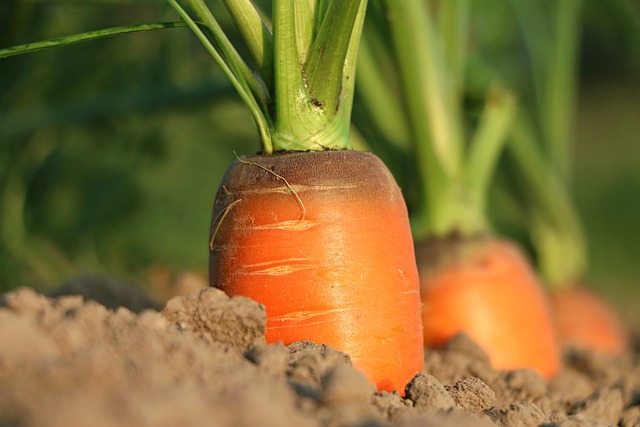When it comes to encouraging children to eat vegetables, carrots are the ideal vegetables because they’re low maintenance, easy to grow, and fruitful. Here I am presenting the total process of growing carrots in roof garden. I will explore how to grow carrots in roof garden with expert tips on container gardening, soil preparation, watering, and care for a healthy harvest.
Duration of Planting
As a popular, long-lasting root vegetable, they can be cultivated in various climates. Numerous varieties are available at local nurseries or agricultural stores, with many types growing up to 5 to 7 inches long.
Container Selection
I used a round container which is 20 inches in diameter and 12 inches in there make sure your container has bottom holes for proper drainage.
Soil Selection
I recommend a soil potting mix composed of 50% garden soil, 30% compost, and 20% river sand or perlite. I have avoided rocky or heavy clay soils, as these conditions hinder carrot growth. The soil is the first step in growing long, delicious, and healthy carrots. A well-prepared garden bed enriched with compost and river sand will create fertile, loose soil, allowing the tasty roots to grow downward and develop fully. Proper soil preparation is crucial for carrot cultivation; if the roots encounter obstacles, they can become stunted and misshapen.
Seed Sowing

Carrots are best grown by direct seed sowing, as they do not tolerate root disturbance well. To start, I have sprinkled the seeds evenly over the soil surface. I have avoided transplanting, and thin out closely packed seeds to ensure better growth. Apply a very thin layer of the same soil mixture over the seeds. Carrots are easily cultivated in large containers, garden beds, and even small pots thanks to the wide variety of types available. To prevent moving the seeds, immediately after sowing, use a light shower or sprayer to gently firm the soil and water.
Location and watering
Carrots need sunlight all day, so I put the container in full sun. To promote optimal germination, I selected a location where the carrots would receive plenty of sunlight and kept the soil slightly damp at all times. It took the carrot seeds six to eight days to sprout.
Seed Sowing Time
The optimal time to plant carrots, a cool-season vegetable, is early spring. Starting a carrot garden now will be ideal. After 13 days, some weeds appeared. I removed them as they emerged, loosening the weeds along the soil surface and pulling them out by hand.
Thinning the Plants

After 20 days of germination, when the sprouts are about 2 to 3 inches tall, thin them to 2 seedlings per 2 inches for smaller varieties and 1 seedling per 2 inches for larger varieties. I selected the strongest and tallest seedlings from each spot and removed the rest. Carrot roots should be planted 1-2 inches apart in containers to ensure proper root development. After 30 days, weed thoroughly, taking care not to uproot the baby carrots. Never let the soil get too dry; instead, keep it just barely damp at all times.
Fertilizing the Plants
To promote healthy growth, I started feeding my carrots organic fertilizers after 42 days, such as leaf mold, vermicompost, decomposed manure, or animal dung every 20 to 25 days. Carrots do not require the application of fertilizer, nevertheless. Water well after fertilizing.
Harvesting Carrot

After 60 days, I harvested one carrot to evaluate the growth. I chose to hold off on eating the little, immature carrots for an additional 20 to 30 days to allow them to mature. In roughly 75 to 90 days, carrots achieve their mature size of half to one inch in diameter. When they were the right maturity, I picked them, delicately pulling the greens from the dirt with my hands, and grabbing the top of the root.
Carrots become tastier as they grow. I started harvesting as soon as the carrots were big enough to eat and continued until all were mature. Don’t expect perfectly straight “grocery store” carrots—homegrown ones will taste better, regardless of their shape.
I started a fresh batch of seeds every three weeks during the late spring season to ensure a consistent crop. Consider growing some colorful substitutes for carrots, as they come in a range of colors, including purple, yellow, white, and black. I composted the green trash after harvesting the carrot to improve the cycling of nutrients in the soil.



